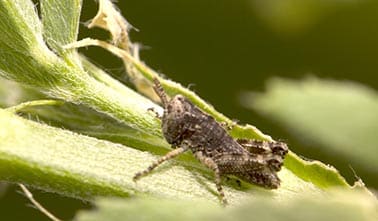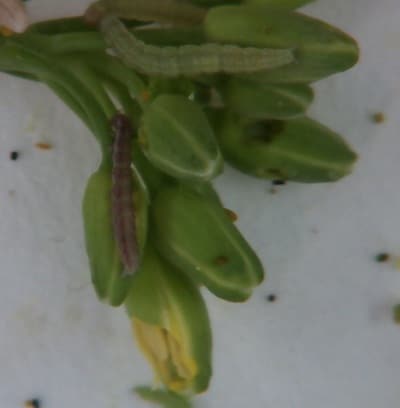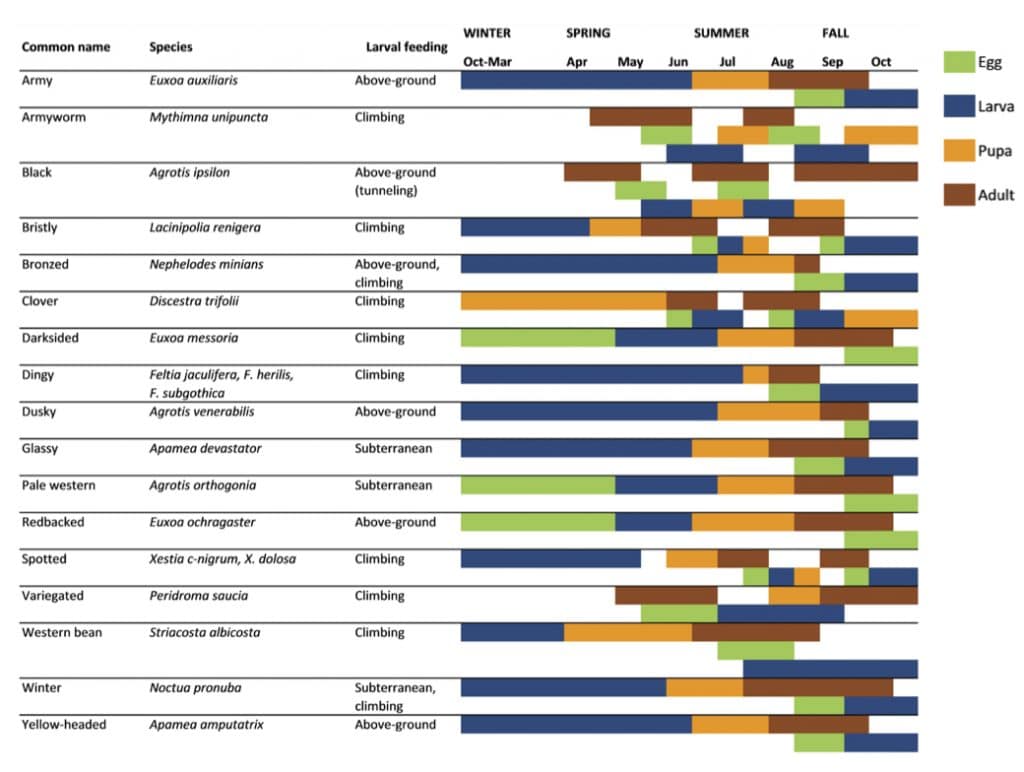Grasshoppers. Grasshoppers are causing some problems this week in areas that remain dry. As for areas that got rain, the rapid crop growth that results should reduce the economic risk from grasshoppers. Rain also tends to predispose grasshoppers to fungal, bacterial and viral infections. Nymphs can also be knocked off plants and drown in puddles. More rain is better, when it comes to these natural population control measures, and one rain event is not enough – particularly for the fungal infection. Moisture needs to be sustained, and warm humid weather afterward adds to infection severity. Read more for thresholds and scouting tips.

Diamondback moth larvae. Larvae have been found on canola in the Swan River area of Manitoba. The earlier that adult moths arrive, the more generations they could have in a season, but beneficial pathogens and insects usually keep the population in check. Diamondback moth normally do the most damage to canola when leaves are senescing and larvae are moving onto pods to feed. Highest yield loss is normally from feeding on pods. Consider insecticide application when 20 to 30 larvae/0.1 m2 are present at the advanced pod stage. This works out to approximately two to three larvae/plant if plant population is close to 100 plants/m2. Read more.

Cutworms. How long will they continue to be a threat? Normally the species that overwinter as larvae will have pupated by mid June and those that hatched this spring (redbacked and pale western) should be close. (See the comparative cycles in the table below.) Cutworms will have started pupating by mid June, but it can happen that cutworms keep feeding until the end of June. Cutworm quiz. Cutworm scouting and thresholds.
